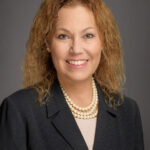The Revival of the COVID-19 Supplemental Paid Sick Leave
On January 25, 2022 Governor Gavin Newsom announced that he reached a deal with legislative leaders to reinstate Supplemental Paid Sick Leave benefits for COVID-19 related absences (“SPSL”). A previous version of the law (Senate Bill 95) expired September 30, 2021.
The new pending legislation is retroactive to January 1, 2022, and becomes effective 10 days after the Governor signs. It is set to expire on September 30, 2022.
Though there may be other changes to the pending legislation, the current draft (which will be referred to here as the “New SPSL”) provides as follows:
Covered Employees
The New SPSL applies to employees who work for employers with more than 25 employees (meaning you must have at least 26 for this law to apply).
Though smaller employers are exempt, they should be mindful of California’s Division of Occupational Safety and Health’s (Cal/OSHA’s) exclusion pay requirement as well as other applicable state and local requirements to provide supplemental paid sick leave benefits (e.g., unincorporated areas of Los Angeles County or regular sick leave under Labor Code Sec. 246).
Permissible Purposes and Amount of SPSL
Covered employees are entitled to up to 40 hours of SPSL if they cannot work or telework for the following reasons:
(A) The covered employee is subject to a quarantine or isolation period as required under an order or guidance (e.g., State or local departments of Public Health, CDC).
(B) The employee has been advised by a health care provider to isolate or quarantine due to COVID-19.
(C) The employee is attending an appointment for themselves or a family member to receive a vaccine or a vaccine booster for protection against COVID-19.
(D) The employee is experiencing symptoms, or caring for a family member experiencing symptoms, related to a COVID-19 vaccine or vaccine booster that prevents the employee from being able to work or telework.
(E) The employee is experiencing symptoms of COVID-19 and seeking a medical diagnosis.
(F) The employee is caring for a family member who is subject to an isolation or quarantine order or guidance as described, or who has been advised to isolate or quarantine by a health care provider.
(G) The employee is caring for a child whose school or place of care is closed or otherwise unavailable for reasons related to COVID-19 on the premises.
Employers may limit the amount of time taken for vaccine/booster purposes (including symptoms) to three days or 24 hours, unless the employee provides supporting medical certification.
Covered employees are also entitled to additional SPSL, up to 40 hours, if an employee or an employee’s family member for whom the employee cares for, tested positive for COVID-19.
How to Calculate Amount of SPSL
The actual amount of SPSL is determined by the employee’s classification and hours worked. Generally, full time employees are entitled to 40 hours of SPSL for any permissible reason described above, and an additional 40 hours if they, or a family member tested positive for COVID-19.
Part-time employees with a regular schedule are entitled to SPSL and additional SPSL in proportion to their schedule. Part-time employees with a variable schedule are entitled to SPSL and additional SPSL based on average amount of hours worked in the six months prior to employee’s leave.
Request For Proof of a Positive COVID-19 Test Is Permitted
If an employee or an employee’s family member tests positive, the employer may ask for documentation and may refuse to provide additional SPSL if an employee fails to provide the requested documentation. The requirement to show proof also applies to an employee’s request for retroactive payment of SPSL (see below).
Employers May Require Employees to Submit to Another Test
An employer may require employees to submit to another COVID-19 test five or more days after the first test, provided the test is at no cost to employees. This is similar to current guidance from the California Department of Public Health and Cal/OSHA.
Interaction with Exclusion Pay Requirement Under Cal/OSHA
Generally, Cal/OSHA requires employers to provide exclusion pay benefits if an employee needs to be excluded from work due to COVID-19 workplace exposure, and the employee cannot telework or does not receive other benefits. When the previous supplemental paid sick leave requirement was in effect (SB 95), Cal/OSHA permitted employers to require employees to exhaust supplemental paid sick leave benefits during such exclusion period. The New SPSL says the opposite:
“An employer shall not require a covered employee to first exhaust their COVID-19 supplemental paid sick leave under this section before satisfying any requirement to provide paid leave for reasons related to COVID-19 under any Cal-OSHA COVID-19 Emergency Temporary Standards…”
Absent clarifying guidance, it appears employers cannot require employees to use SPSL during the exclusion period.
Calculation of SPSL and Applicable Caps
SPSL for nonexempt employees can be calculated by one of the following:
- In the same manner as the regular rate of pay for the workweek in which the employee uses paid sick time, whether or not the employee actually works overtime in that workweek, or
- By dividing the employee’s total wages, not including overtime premium pay, by the employee’s total non-overtime hours worked within the prior 90 days of employment.
SPSL for exempt employees shall be calculated in the same manner as wages calculated for other forms of paid leave time.
Notwithstanding the calculation methods and amount of leave, employers are not required to pay more than $511 per day and $5,110 in the aggregate for SPSL.
Previous Unpaid Absences Must be Paid and Credit May be Applied
Employees who were absent from work due to COVID-19 between January 1, 2022 and the New SPSL’s effective date and did not receive pay, may ask for retroactive SPSL payments. However, employers who paid for COVID-19 related absences may credit such payments against employees’ SPSL entitlement.
Notably, hours provided under California’s sick leave law cannot be used as credit against an employee’s SPSL entitlement, but hours provided under federal or local law can be used as credit.
New Paystub and Notice Requirements
The New SPSL requires employers to provide written notice to employees setting forth the amount of SPSL that employees have used on either employees’ wage statements or in separate writings provided on the designated pay date. If employees did not use any SPSL, employers should state “zero hours used.”
Once the New SPSL becomes effective, the Labor Commissioner will prepare and post a model notice regarding SPSL employers may use. Employers may also email the notice to remote employees.
Sue M. Bendavid and Tal Burnovski Yeyni are employment defense attorneys.
This information provides an overview of a specific developing situation. It is not intended to be, and should not be construed as, legal advice for any particular fact or situation.

